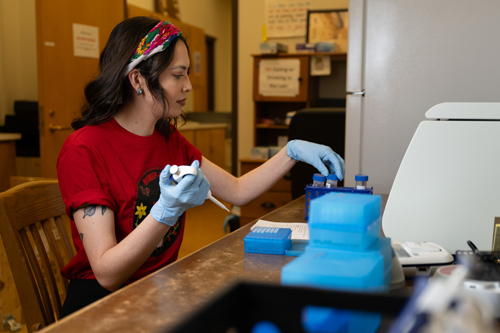Keith Stowell, chief medical officer at Rutgers University Behavioral Health Care, discusses the findings.
What is the significance of the report’s findings?The report found that the percentage of adults with symptoms of an anxiety or a depressive disorder during the past seven days rose from 36 percent in the previous six months to almost 42 percent during this report’s period. Those who needed but did not receive counseling or therapy also increased significantly, from 9 to almost 12 percent.
It’s notable that two in five adults over age 18 experienced symptoms of anxiety or depression disorder during the week of being surveyed and that one in four of these adults did not receive counseling or therapy.
This report reflects what we are seeing clinically: Many people who should be treated are not. As we move into the second year of the pandemic, the stressors — job losses, illness, anxiety over exposure to the virus — will continue or get worse. This has been complicated by already limited access to mental health services.
Why are young people and those without a high school diploma most affected?
These groups are more likely to be in lower socioeconomic brackets that have been most impacted by the pandemic. Young adults and people who did not finish high school likely do not have savings to balance out the pandemic’s financial stressors. Young adults also have not had the opportunity to develop coping skills that typically come with age. The young adult period is also a higher risk period for developing certain types of mental illness, such as Schizophrenia.
What are the barriers to those seeking mental health services?
Access to mental health care was challenging even before the pandemic. The report will help clinicians to better target interventions that focus on these higher-risk groups.
Telemedicine has increased access to care, especially in areas such as rural communities, since people can access care without traveling. We have seen the no-show rates in clinics decrease due to the improved ease in access. However, there are still disparities. People who do not have computers, are unfamiliar with technology or do not have quality internet access cannot use these services. Telemedicine might also be a challenge for people with visual, auditory or intellectual disabilities.
There is also considerable stigma to having a mental health condition that prevents people from accessing care, as they view seeking help as a sign of weakness. Payment for service is another barrier. For those without insurance, the cost of treatment can be insurmountable. Even for those with insurance, there is disparate coverage with some insurers charging higher co-pays for mental health and substance use disorder treatment.
What are the signs someone may need to seek mental health treatment?
First, it’s important to understand that we all have periods when we feel sad or anxious. This is a normal part of life. These feelings become problematic when they are more sustained over weeks than simply days. When it affects your daily ability to function or you begin having suicidal thoughts, it is a sign you should reach out for help.


